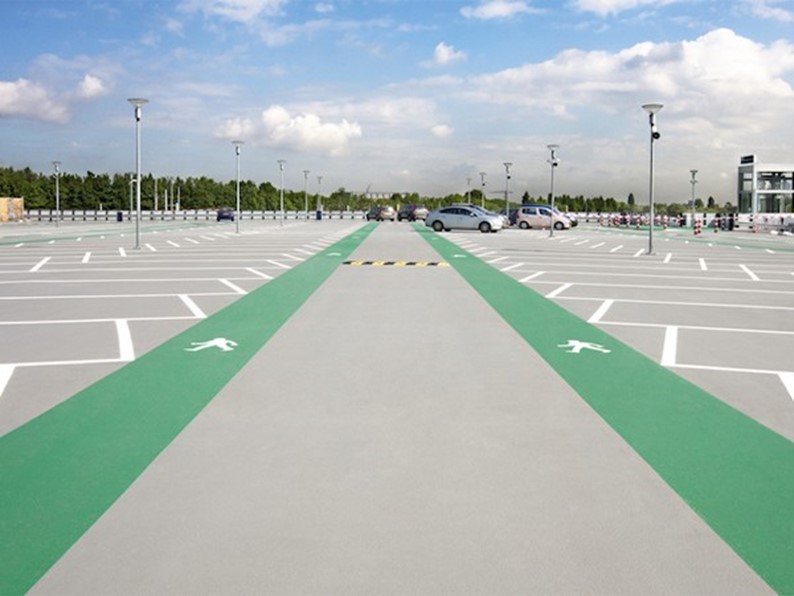
A polyurethane coating is a polyurethane layer applied to the surface of a substrate for the purpose of ...
protecting it from various types of defects such as corrosion, weathering, abrasion and other deteriorating processes. Polyurethane systems are widely used in a variety of coatings (outdoor and/or topcoat) applications as they have the ability to impart properties such as high durability, toughness, high gloss, and so on. Be it solvent-based polyurethane or water-based polyurethane or 100% solids polyurethane coatings, it is one of the versatile chemistries today with a wide range of applications.
Applications of polyurethane coatings
the main applications of polyurethane coatings include:
- Wood and concrete architectural coatings (floors, pavements, airport hangar floors, etc.)
- Automotive finishes (topcoats, clear coats)
- Undercoat primers and sealers
- Textile and leather coatings (leather finishing, artificial leather)
- Metal and plastics coatings
- Industrial and maintenance coatings
It has to be noted that polyurethane coatings also have some special applications such marine clear coat.
Marine polyurethane clear coat
Polyurethane coatings used for marine coatings are made from resins that contain the isocyanate group and are highly reactive with compounds that contain hydroxyl groups (e.g., water and alcohols) which are commonly used for curing agents. Coating films are formed by solvent evaporation followed by chemical reactions between the polyurethane resin and the curing agents. Common curing agents for polyurethane coatings include water and polyols.
Polyurethane coatings, which cure by reaction with water, are called moisture-cured polyurethane coatings. They are packaged in a single can and rely on moisture in the air to cure. This type of coating is commonly used as a cosmetic coating or as a clear varnish.
The most important polyurethane marine coatings are packaged as two or three component systems. One component contains the polyurethane resin and the second component contains an organic polyol. Some systems require the use of a third component containing catalysts (e.g., metals soaps or amine com-pounds) to accelerate curing.
Polyurethane coatings, like epoxy coatings, must be mixed thoroughly with the curing agent and catalyst before use. After mixing, commonly used coatings have a pot life of 2±6 hours. The coating film is typically dry to touch within 12 hours and fully cured after 14 days at 25°C. The time to cure is highly dependent on the ambient and surface temperature during the curing period as well as the humidity. The curing reaction slows down rapidly at temperatures below 10°C.
Polyurethane can be used to protect a boats paint and to keep the finish on wooden marine vessels visually appealing and more durable. You can apply polyurethane over any type of paint if it is clean and prepared properly. Polyurethane coatings can be applied to exposed wooden surfaces to create a glossy finish that serves to repel water, resist corrosion, and protect from scratches, stains, and UV damage.

Comparing polyurethane coatings with epoxy coatings
One of the significant advantages of a polyurethane coating is its relatively fast cure time compared to an epoxy coating. Floors coated with polyurethane can be ready for operation in a little as 24 hours without any additional processing. Epoxy coatings, on the other hand, need a curing time of at least seven days before they are ready for use.
Epoxy coatings are more resistant to a wide range of aggressive chemicals such as sulfuric acid. However, polyurethane coatings exhibit superior resistance to lactic acids, making them ideal for floor coatings in industries that process dairy products.
Polyurethane coatings are also known for their ability to adhere well to a wide variety of substrates in a broad range of temperatures. Polyurethane coatings are used for many different applications, including wood floors, metals and on top of other coatings. Many polyurethane coatings require no additional processing to cure. They are simply applied and cure upon exposure to moisture in the air.
Depending on the product, polyurethanes can have better chemical resistance and provide better abrasion and impact resistance than the epoxies.
Here’s some of the different types of Polyurethane Coatings:
- Moisture Cured Urethanes: Moisture Cured Urethanes are one component urethanes that cure off of moisture and humidity. These coatings can normally handle higher dry service temperatures than epoxies and two component urethanes. They provide a hard finish that is very durable. Most MCU’s are aromatic, which basically means they can change color over a period of time.
- Acrylic Polyurethanes: Acrylic Polyurethanes are known for their excellent gloss and color retention, UV resistance, and provides a tough and durable finish. These coatings are used for exterior steel surfaces for long term protection. Acrylic Polyurethanes are usually made with an aliphatic compound which provides the long term stability needed in an Acrylic Polyurethane.
- Polyester Polyurethanes: Polyester Polyurethanes is the premier Polyurethane in terms of abrasion, scratch, impact resistance and have excellent gloss and color retention. These coatings are made with 100% Polyester resin which provides an extremely durable finish. Recommended as finish coat for concrete floors in high traffic areas and exterior structural steel surfaces.
Generally speaking, while polyurethane coatings may appear to be visually similar to other coatings (e.g., epoxy), they possess several distinct properties that make them ideal for specific situations. While polyurethane coatings are relatively durable, they are softer and more elastic than their epoxy counterparts. This attribute makes polyurethane-coated floors ideal for moderate to heavy pedestrian traffic. The reduced stiffness gives polyurethane floors a slight springiness, allowing them to absorb sharp impact loading. This durability also makes them more resistant to abrasion and less prone to dents and scratches. Improved elasticity also means that polyurethane floors are able to maintain their shape and mechanical properties in temperatures lower than 30°F (-1°C).
Finally, it can be stated that the selection of coating systems requires consideration of many different factors, such as cost (materials and application), temperature and humidity during application and drying/curing surface preparation requirements, and desired service life.





